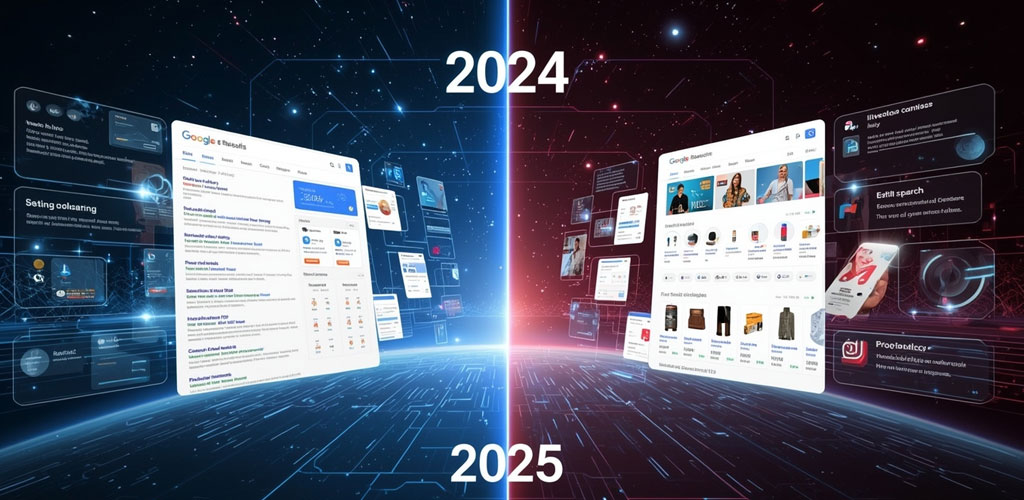In the fast-moving world of online shopping, visibility on Google can make or break an ecommerce business. Over the past year, Google has introduced subtle yet significant changes to its ecommerce Search Engine Results Page (SERP) features. These updates are designed to improve user experience while reshaping how ecommerce brands position themselves in search rankings. If you’re in the business of selling online or providing Ecommerce SEO Services in India, understanding these updates is critical to staying competitive.
The search landscape is no longer just about ranking in the top 10 blue links. It’s about owning rich results, image packs, shopping carousels, product grids, and local listings—all of which are part of the evolving SERP features.
Let’s explore what’s changed in Google’s ecommerce SERP features between 2024 and 2025, and why businesses need to adapt fast.
The Shift Towards Visual Shopping Experiences
Google is prioritizing visuals like never before. While 2024 saw a growing emphasis on image packs and product thumbnails, 2025 has taken it further. Product results are now shown in richer formats with larger images, enhanced price badges, and even live stock availability.
For ecommerce brands, this means that structured data implementation is not optional anymore. Schema markup, high-quality product photos, and accurate stock levels directly influence whether your product shows up in these visual spaces.
Integration of AI-Powered Shopping Guides
In 2025, Google’s SERP features have started incorporating AI-generated shopping guides based on user behavior and preferences. These guides summarize reviews, compare products, and suggest alternatives—all without the user leaving the search page.
Compared to 2024, when users had to manually compare options or rely on ads, the current version allows for deeper user engagement directly in the SERP. This makes it more important than ever for ecommerce businesses to optimize product pages not just for keywords, but for value-added content like FAQs, reviews, and unique selling points.
Enhanced Product Listings and Local Integration
Google has made a serious push towards connecting online and local retail. In 2024, product listings were mostly focused on online merchants. But in 2025, more “nearby” filters and maps are integrated with product availability.
If you’re selling online in India and targeting local customers, this is a great opportunity. Local ecommerce brands can now show product availability in their physical stores via Google’s Merchant Center and Business Profile integration. For agencies providing Ecommerce SEO Services in India, this feature allows clients to dominate both local and national search results.
The Rise of Zero-Click Ecommerce
Another major shift in 2025 is the increase in zero-click searches. With Google showcasing more complete product information right on the search page, users are completing their buyer journey without ever clicking through to a website.
In 2024, ecommerce websites still had a better chance of getting traffic from organic search. But now, unless your brand appears in featured snippets, product cards, or knowledge panels, you might lose out. To stay visible, ecommerce businesses must focus on appearing in these smart features by providing detailed, structured content and submitting accurate feeds to Google Merchant Center.
More Emphasis on User-Generated Content and Trust Signals
Google now gives more weight to authentic reviews, ratings, and user-generated photos. Compared to 2024, when reviews were mostly supplemental, in 2025 they are often featured directly in shopping carousels and knowledge panels.
Encouraging customers to leave honest feedback and upload product images now impacts your SERP visibility directly. Ecommerce sites should also highlight trust signals like free shipping, return policies, and verified brand status—all of which Google now displays in enhanced listings.
Mobile SERP Evolution and the Role of Page Experience
With mobile-first indexing still dominant, Google’s 2025 SERPs are even more tailored to mobile users. Compared to the 2024 design, today’s mobile results show sticky carousels, quick comparison boxes, and AI-powered product summaries.
This means your mobile site must load fast, be easy to navigate, and offer seamless checkout. Poor mobile experience could mean your product doesn’t show up at all, even if it ranks well on desktop. This shift highlights the importance of technical SEO and responsive design for ecommerce platforms.
Final Thoughts
The evolution of Google’s ecommerce SERP features from 2024 to 2025 reflects a broader change in how people shop online. Google is trying to reduce friction in the buyer journey, and that means offering more information upfront.
For ecommerce businesses and SEO professionals alike, the takeaway is clear: the SERP is no longer just a path to your site—it is the shopping experience. To thrive, you must treat every element of the search results page as your storefront.
If you’re looking to grow your online visibility and compete in this changing landscape, working with an expert team offering Ecommerce SEO Services in India could be your smartest investment in 2025.










